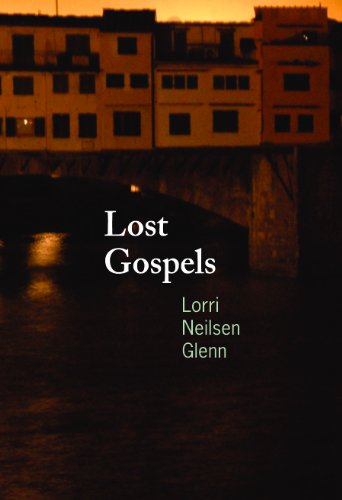Lorri Neilsen Glenn: Lost Gospels
Lost Gospels, Lorri Neilsen Glenn’s third poetry collection, begins with an epigraph from Simone Weil: "The true earthly blessings are metaxu...the temporal seen as a bridge." Lost Gospels, divided into six sections, hovers loosely around Weil herself—a French philosopher, Christian mystic, and social activist (she died in 1943, at the age of 34). Weil is a presence in these pages, both by name and as a kind of spectre who inhabits the speaker’s thoughts and preoccupations, shading each of them with concerns toward ethics, religion, and philosophy. Throughout Lost Gospels, Glenn has taken the idea of metaxu to heart, gleaning connection from separation in linked sets of imagery that seem intuitive—and beautifully tenuous.
For me, metaxu makes its most stunning appearance in the second section of "Songs for Simone":
…when a man leans in, copper-sharp breath: You think I want money? I
won’t ask for money, just have a beautiful day—can one ignore him?—
and below us, at the lip of a puddle: a penny, winking. We visit our
mother who snores in her high-rise bed, her mouth a dark field where,
years ago, she buried pearls. Your fingerprints are everywhere on my
imagination: the Big Dipper …
And a stanza later, "This is the meantime. When / I return home seeds I laid on the balcony are gone. Somewhere, because of this // a bird lives." While the first leap is impossible to overlook (from "copper-sharp breath" to the penny of the following stanza), the way Glenn presses this image further is frankly magical: from the penny, we’re given the pearls (two small, brilliant objects which mirror each other in this light), and from there, it’s another brief step to a set of fingerprints —another small, round, and glossy wonder. Beyond shape, too, the arrangement of these objects also speak of metaxu: pearls buried in a dark field suddenly sound exactly like a constellation, as do the seeds laid on the balcony. Standing alone, these images would hardly lead us to one another. But Glenn’s sharp eye and precise choreography have made these simple increments together seem other-worldly.
It’s easy to call out moments in this book that I still can’t shake: "The clang of metal, a crash: the man / next door, bare-chested, has thrown a small orange tricycle / against the fence," or the quick "scissor-clip flight of butterflies," or the air above the "crow-knuckled elms" "thickening electric, forks bulging with spark" (all from the ten-section title poem), or how "the wind had already dropped her invisible scarves somewhere on the field" in "Horse." And beyond Glenn’s astounding imagery, there is her sense of voice and presence on the page as well. Take the closing of "Legs," a poem I’d just begun to question, when it ended suddenly and took my breath away: "Pilgim, // she may be an oracle."
Glenn ends her poem "Lucy: A love story about daughters," with the line "We are its blooming and we rise / to our feet with the sun in our eyes." To read Lost Gospels from cover to cover is to experience that sensation of sun in our eyes with every new page—these poems are populous, brimming with image and voice and insight, so lush that we never want to blink.
 Lorri Neilsen Glenn
Lorri Neilsen Glenn